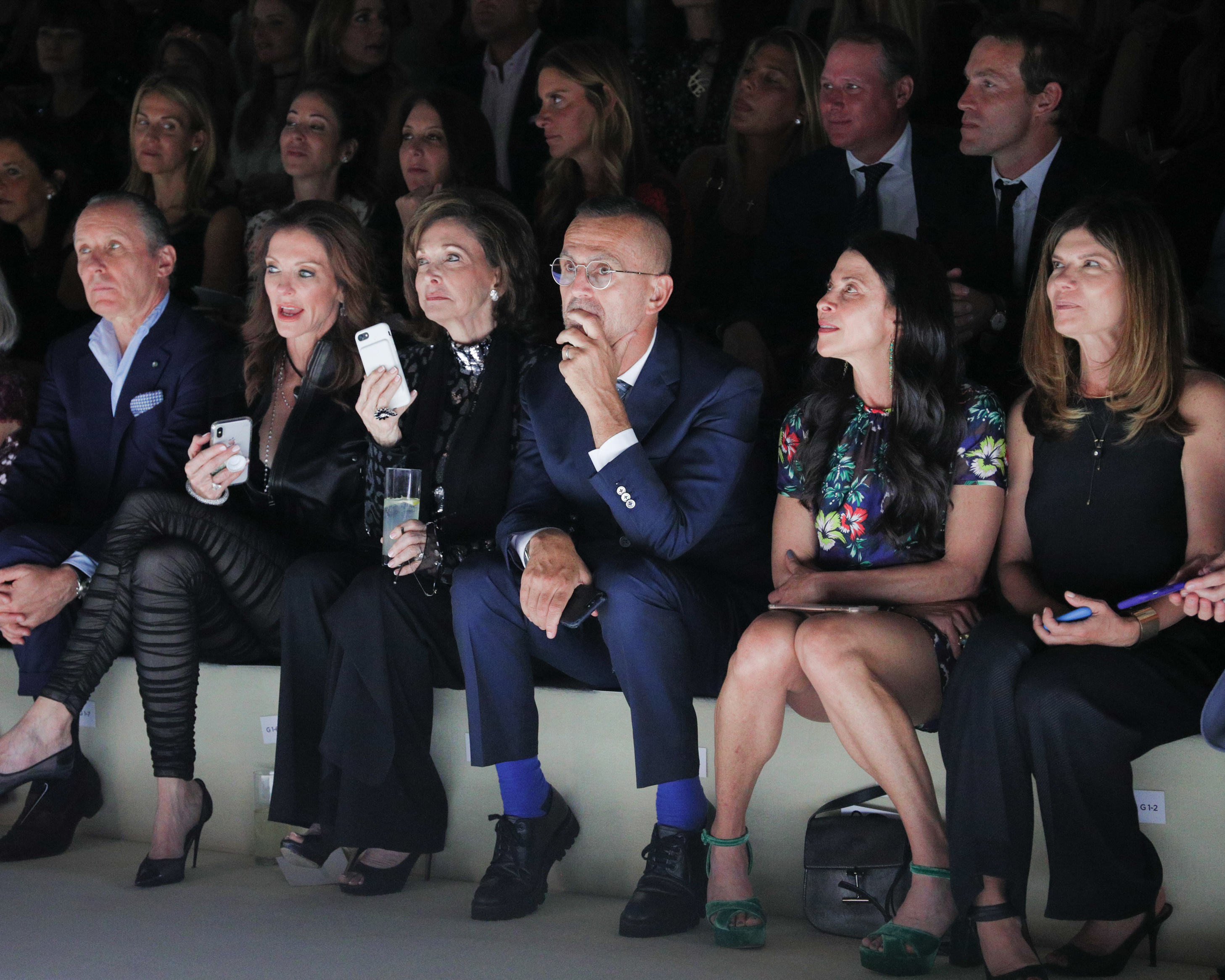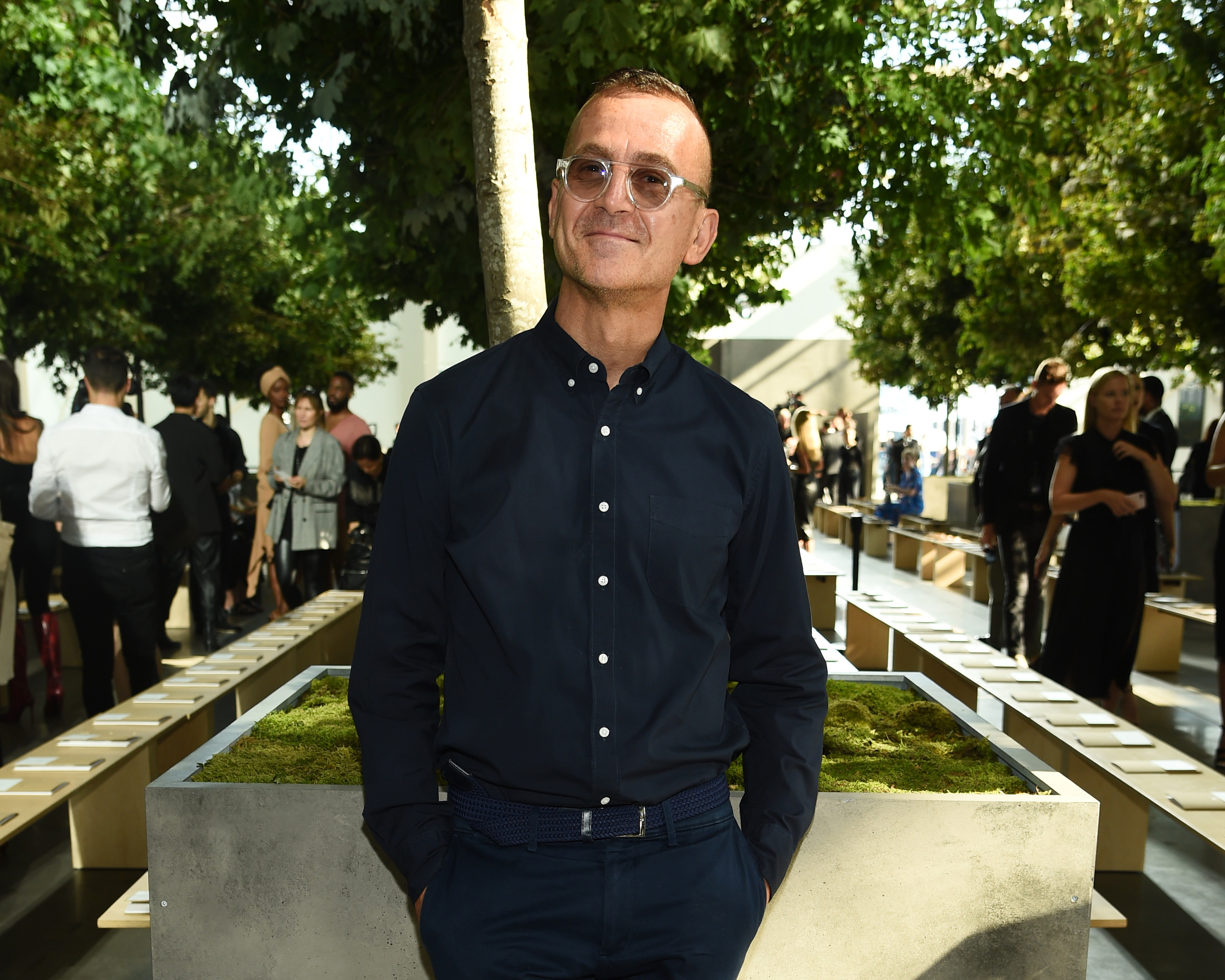

OK. Let’s get something straight, Google search results. Steven Kolb—the CEO of the CFDA (Council of Fashion Designers of America)—was not born in Belgium as you keep insisting he was. Diane von Furstenberg, who was the board chair of CFDA before handing over the reins to Tom Ford a couple of years ago, was born there. Steven and DVF worked closely for many years, but Kolb was born in New Jersey and grew up in Bergen County. So one more time: Bergen, not Belgium.
Kolb laughs when talking about the vagaries of Google and his own lack of tech savvy to figure out how to correct it but the laughter softens when I question him about his growing up over in Jersey. He becomes contemplative, which is one of the characteristics that have stood him in such good stead for 15 years in his job at CFDA, an organization that represents 477 designers and brands. It’s not only a trade organization, but also a philanthropic one that focuses on—among other things—health initiatives, disaster relief, and social causes. Commerce and kindness could be its watchwords.
There’s a sharp balance there that inherently must be manifested in the sharp and balanced person who runs it. I ask Kolb if he were the type of, well, contemplative little Jersey boy who dreamt about running a nonprofit when he grew up.
“No,” he says, a soft chuckle now playing chase with his memory of himself as a child. “I think for me growing up as a boy in New Jersey, the interesting thing is that we were close to New York City but as a family didn’t spend a lot of time coming into New York. My parents didn’t have a comfort level with it. The only time I really remember going in was for my sister’s birthday and we went to Chinatown for Chinese food and then to see the Harlem Globetrotters at Madison Square Garden. I just remember my mom and dad on the subway from one to the other being very uptight.”
“It wasn’t until college when I majored in communications that I started to spend time in the city,” he explains. “But what I knew is that I didn’t want to work in corporate America because that to me was a scary kind of Big Brother thing. And being a gay man, I didn’t feel an affinity for what I imagined the corporate C-suite guy is.”
Instead, Kolb volunteered at a crisis intervention hotline and learned about “active listening,” he tells me. He also spent time as a volunteer for VISTA, the AmeriCorps program. His first job out of college was with the American Cancer Society back in Jersey, which was followed by a move to New York and a stint as a director of DIFFA (Design Industries Foundation Fighting AIDS). He then was recruited for the CFDA job after just one year as the founding executive director of MTV’s Staying Alive Foundation, where he established an international grant-making program for HIV/AIDS prevention and education for youth.
All of these jobs seem to be suffused with a call to serve. Is that, in fact, what inspires him? “One hundred percent,” he says. “Also, I think I’m incredibly shy in a lot of situations, so when you’re in a caring or nurturing situation or being of service then there is intention in why you’re in the relationship. You’re bringing something to that relationship other than just who you are as a person.”

Kolb insists that he didn’t know a lot about fashion when he was hired to run CFDA—although he did wear rag & bone to his wedding back in 2012 to his husband, Jay Inkpen, who wore J.Crew. “It wasn’t why I got hired,” he says. “I got hired because I had not-for-profit management and fund-raising experience. I had to learn all the fashion stuff. And I found out that the people that I met were the most generous in terms of patience and knowledge.”
“I knew Ralphdonnacalvin,” he says, mentioning Lauren and Karan and Klein as if they had one branded first name. I asked him if Diane Von Furstenberg mentored him in that regard. “I don’t know if I’d say that Diane was a mentor. She was more of a friend in a way,” he muses. “But she really helped me because she was my first board chair. She really was instrumental in me figuring it out. And just being there. And that translated not just professionally, but personally. You know her. You know how she is. She was the board chair for 13 years. She’d always say, ‘Oh, just one more year,’ with the flip of the hair and the whole thing. She’s incredible.”
As the years passed, he and DVF grew the organization globally and put it on a sounder financial footing. “We took on lobbying in Washington for copyright protection to buying the Fashion Calendar from Ruth Finley and taking over the scheduling of New York Fashion Week,” Kolb continued. “Diane is very instinctive. She just knows right away. She’s very forthcoming. I think that really benefited the growth of the organization. Then she had the DVF Awards and other things, so it got to the point where it was time for her to step down. And also change is good, organizational change is good. That’s when Tom came on.”
Ford joined Kolb at the helm in March 2019 and just renewed for his third year. “I don’t think he’ll go for 13, though,” he says.
When I emailed DVF to ask her about Kolb, it took her less than a minute to respond. “Steven and I had the most wonderful ride at CFDA for 13 years!” she immediately wrote back. “I turned it into a family and he made it a business. Steven is smart, honest, and unusually humble in a world of egos. I love him, respect him, and admire him.”
So, what’s the difference between DVF and Tom Ford as board chairs? Kolb chuckles again, but this time it seems he’s chasing some carefully chosen words before he decides to just, yes, cut to the chase itself.
“Diane sleeps with her iPad,” he says. “She is intuitive. She’s an immediate ‘Yes!’ There is just this energy and rapport. Tom’s more measured. He’s thoughtful. He takes his time. He sort of comes from a more deliberate process where her process and success comes from that immediacy of hers. That’s the big difference between the two of them.”
Still, there are some similarities. “They’re both incredibly hands-on. There’s a high level of trust that she had with me and he has with me, but at the end of the day they are creatives, so they want to know what the invitation color is and what the stock of the paper is,” Kolb says. “We don’t do anything creative unless Tom signs off on it. It was the same with Diane. I guess the biggest difference finally—it’s kind of funny—is that she’s all about color, so she’d always be, ‘Color! Color! Color!’ And he’s all about black and white—with maybe just a little room for color. But they both take it very seriously.”
For Ford, though, there have been new and unexpected challenges that even the canniest business consultant didn’t see coming. “You have to remember that Tom took the job right before the pandemic, so he had no idea what we were going to be facing. So not only did he have to manage his own business, but also help manage CFDA as we were managing bigger issues for the industry and support for our members,” says Kolb. “And he did a great job on that.”
For a guy who only knew “Ralphdonnacalvin,” it’s been quite a journey to “Dianetomsteven.” That little boy from Jersey might have only been to Manhattan once, but for the man he became it was the place where he finally arrived and is with that well-honed sense of service now helping others—emerging designers, the underrepresented—do the same.













